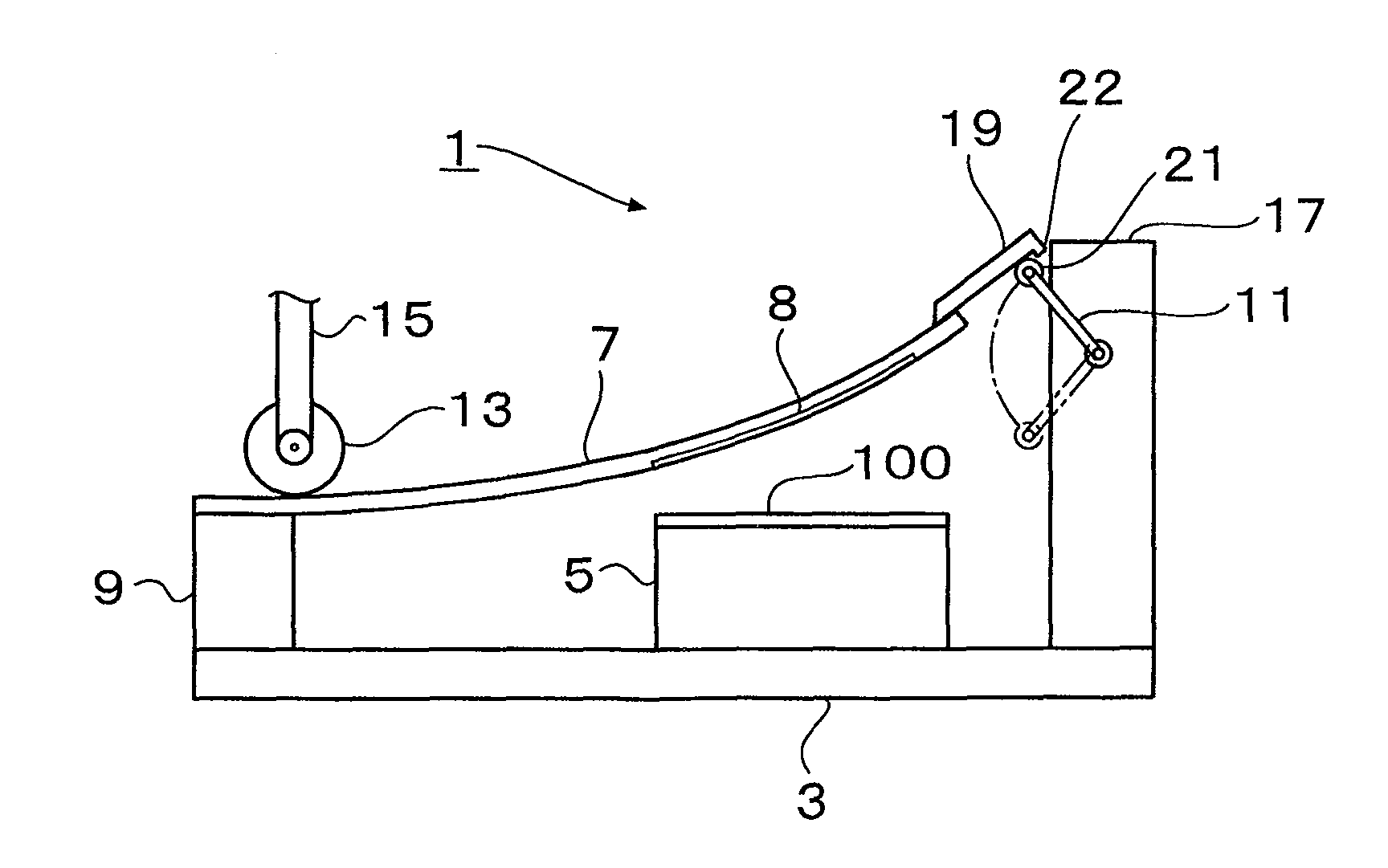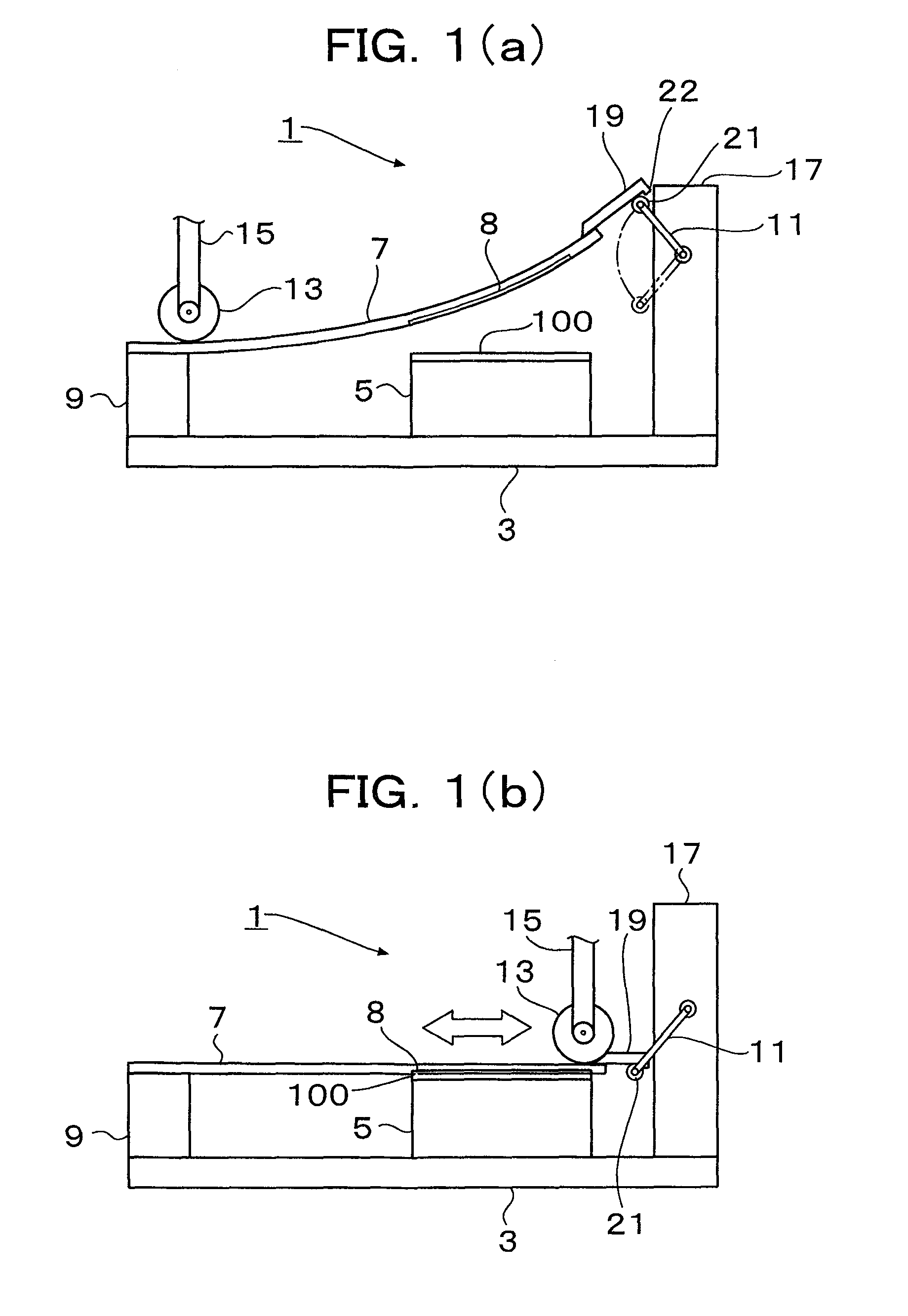Fine-structure transfer apparatus
a technology of nano-imprinting and transfer apparatus, which is applied in the direction of dough shaping, manufacturing tools, applications, etc., can solve the problems of affecting the quality of dough, so as to improve efficiency, eliminate transfer defects, and improve the effect of efficiency
- Summary
- Abstract
- Description
- Claims
- Application Information
AI Technical Summary
Benefits of technology
Problems solved by technology
Method used
Image
Examples
Embodiment Construction
[0041]FIG. 1(a) is a front view showing an outline of an embodiment of the fine-structure transfer apparatus according to the first aspect of the present invention, before pressure is applied to a stamper. FIG. 1(b) is a front view showing the same, with pressure applied to the stamper. FIG. 2 is a plan view of the fine-structure transfer apparatus shown in FIG. 1. The fine-structure transfer apparatus of the present invention which is generally indicated by 1 has the following basic components: a base plate 3, a stage 5 placed on top of the base plate 3 for holding a transfer element 100 in position, and a stamper 7 provided over the stage 5. The stamper 7 is elongated in shape; one of its ends is fixed to a first post 9 and the other end can be lifted upward like a cantilevered spring by means of a pivoting arm 11 that reciprocates in a vertical direction. The pivoting arm 11 is mounted on a second post 17 in such a way that by means of a suitable cam mechanism not shown, it can p...
PUM
| Property | Measurement | Unit |
|---|---|---|
| pressure | aaaaa | aaaaa |
| angle | aaaaa | aaaaa |
| inner diameter | aaaaa | aaaaa |
Abstract
Description
Claims
Application Information
 Login to View More
Login to View More - R&D
- Intellectual Property
- Life Sciences
- Materials
- Tech Scout
- Unparalleled Data Quality
- Higher Quality Content
- 60% Fewer Hallucinations
Browse by: Latest US Patents, China's latest patents, Technical Efficacy Thesaurus, Application Domain, Technology Topic, Popular Technical Reports.
© 2025 PatSnap. All rights reserved.Legal|Privacy policy|Modern Slavery Act Transparency Statement|Sitemap|About US| Contact US: help@patsnap.com



